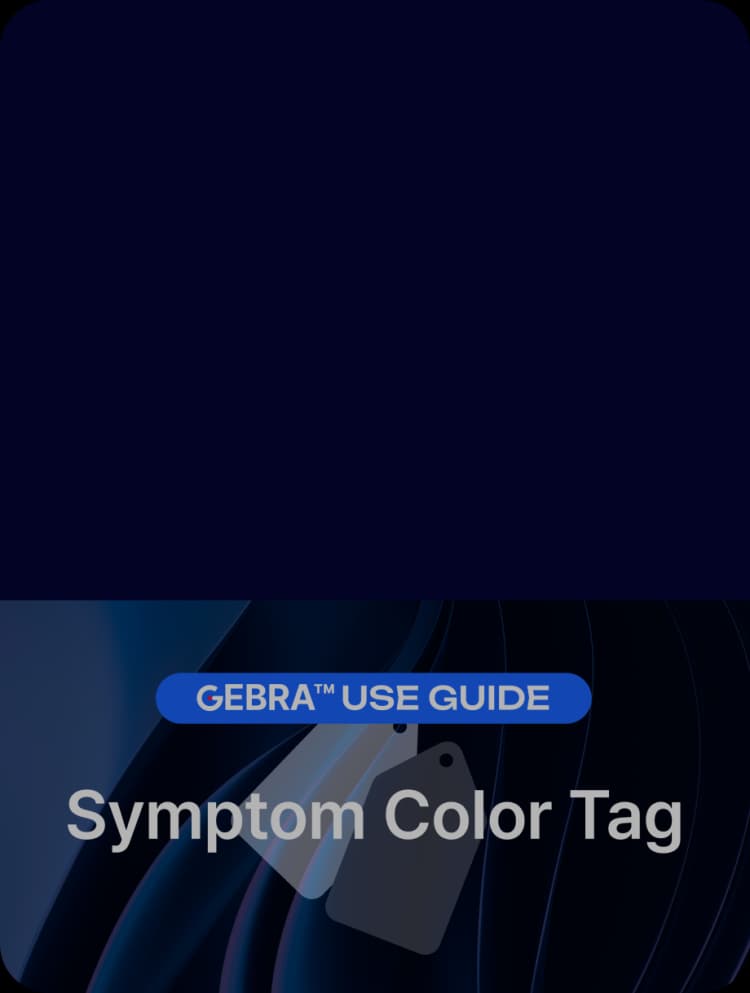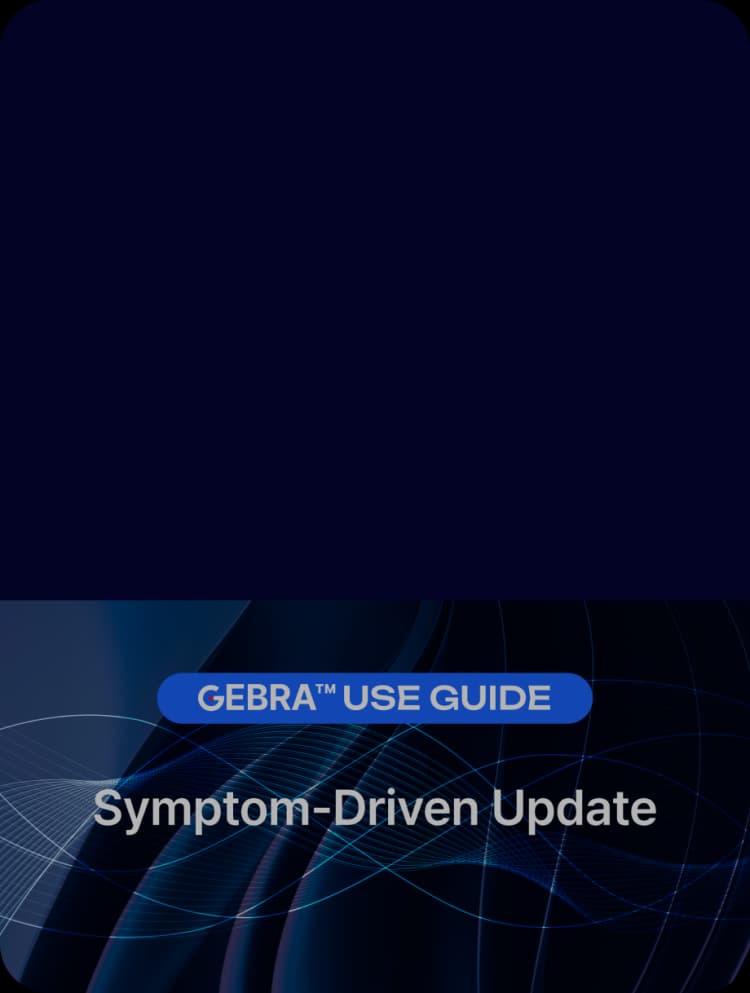GEBRA™ Use Guide: Filters – See What Matters, Faster
- Product | 25. 11. 04

🎯 When AI Stops, Your Expertise Continues
In most cases, GEBRA’s 3ASC efficiently prioritizes causative variants into High, Mid, and Low tiers.
But sometimes, your intuition says there’s more to look at.
A variant just below the cutoff, an atypical phenotype, or a rare inheritance pattern might still hold the answer.
That’s when Filters step in — giving you full control to review what AI didn’t highlight.
Apply multiple clinical and genomic criteria instantly, and review what truly matters — your way.
🧬 Explore Every Filter Option

The Filters section — located between Symptoms and Results on each GEBRA sample page — allows clinicians to validate and refine their interpretations.
All filters can be applied individually or in combination to efficiently narrow down meaningful variant candidates.
1. Gene
Search for specific gene names directly.
Example: NF1, TTN, DMD
Quickly review variants in genes already suspected based on your clinical judgment.
2. Gene List
Focus on predefined gene lists such as:
- Secondary finding gene list
- 3billion-curated pre-disease gene list
- Confirmed imprinting gene list
- Predicted imprinting gene list
Useful when you want to isolate variants related to specific gene groups curated by trusted sources.
3. Gene Panel
Retrieve major genes associated with specific disease groups.
Example: Epilepsy panel, Cardiomyopathy panel
Ideal for re-examining new patients within known diagnostic categories.
4. Disease Inheritance Pattern

Filter variants by inheritance mode.
Options: Autosomal Dominant (AD), Autosomal Recessive (AR), X-linked
When recessive inheritance is suspected, focus on homozygous or compound heterozygous variants.
5. Segregation
Filter by transmission pattern.
Options: de novo, paternally inherited, maternally inherited
Especially useful in trio analysis for identifying de novo variants.
6. Phenotype (HPO-based)
Refine variant selection based on phenotype matching using HPO terms.
Example: HP:0001250 (Seizures), HP:0001290 (Developmental delay)
Use this when you want to focus only on variants associated with specific patient symptoms.
7. Allele Frequency (Public Database)
Filter by population frequency using public databases such as gnomAD, DGV, KRGDB, or 1000 Genomes.
Example: gnomAD < 0.01
Helps exclude common variants and retain rare candidates for further review.
8. 3B Allele Frequency
Use 3billion’s internal dataset — built from tens of thousands of analyzed samples — to filter by population frequency within our proprietary database.
This provides real-world clinical relevance beyond public datasets.
9. In-house Allele Frequency
Apply filters based on your institution’s internal sample database.
Ideal for laboratories maintaining their own variant frequency reference.
10. Quality
Filter variants based on sequencing quality metrics.
Examples: Read depth, Mapping quality, Allele balance
A low-quality variant doesn’t always mean low significance — use this to double-check borderline calls.
11. Zygosity
Filter variants according to zygosity status.
Options: Heterozygous, Homozygous, Hemizygous
12. Variant Type
Categorize variants by type such as nonsense, missense, intronic, or splice-site variants to focus your review efficiently.
13. Known Variant
Display only variants previously reported in public databases such as ClinVar or DECIPHER.
Helpful for quickly confirming known pathogenic or likely pathogenic variants.
14. Pathogenicity (ACMG Classification)

Filter by clinical pathogenicity level.
Options: Pathogenic (P), Likely Pathogenic (LP), VUS, Likely Benign (LB), Benign (B)
Review candidate variants based on their ACMG tier and diagnostic relevance.
💾 Save and Reuse Your Logic

No need to reapply filters every time.
Save your preferred combinations under Presets and run them with a single click.
“AR + Homozygous + P/LP”
For example, this single preset lets you browse consanguineous cases instantly — no repetitive setup.
🩺 Interpretation, Your Way
3ASC accelerates your workflow.
Filters bring precision back to your hands.
Apply your reasoning, compare patterns, and re-prioritize the data that matters to your patient — instantly.
Because sometimes, diagnosis isn’t about starting over.
It’s about looking again — smarter.
📍 Learn More
Explore how GEBRA integrates automation with clinical expertise.
Do you find this post helpful?
Click the button below to copy and share the link.

3billion Inc.
3billion is dedicated to creating a world where patients with rare diseases are not neglected in diagnosis and treatment.







